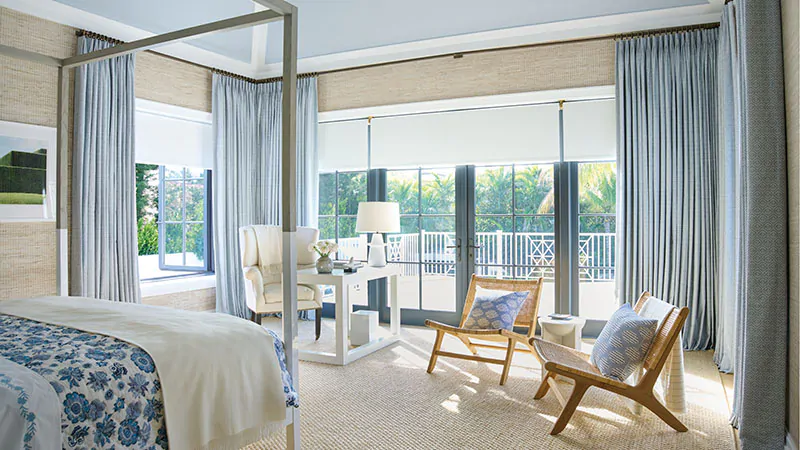BUYING GUIDE:how to choose window treatments
Learning how to choose window treatments isn’t just about picking your favorite style, fabric or color. The right window treatment can truly transform your room, improving its appearance and atmosphere as well as increasing its functionality with the perfect light and privacy control. But with so many window treatments available, how do you choose the right one for your space? That’s where our window treatment buying guide comes in.
Tips for How to Choose Window Treatments
Choosing the right window treatment will depend on your individual needs for your space as well as your aesthetic preferences. As you explore our window treatment buying guide, take the following considerations into account to help you determine which is the right choice for your space.
1. Window Size & How Many Windows You’re Covering
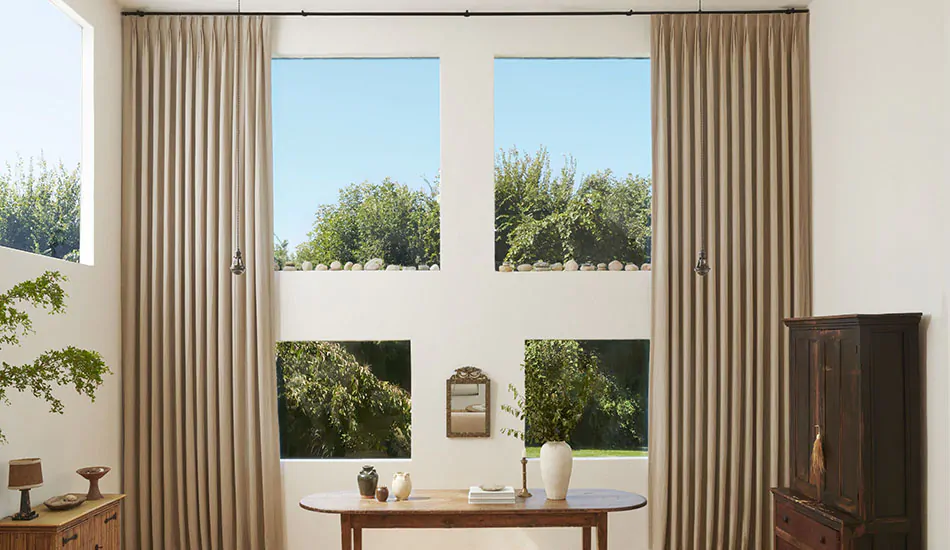
How many windows you need to cover, and their size, will affect which style of window treatment is best suited to your space. For very large windows, Drapery or motorized Shades are likely going to cover your windows most efficiently while also giving you the easiest functionality. For very small windows, Blinds or Shades that can be made as small as your window will be the right choice.
It’s also important to think about not just the length and width of your window, but also the depth of your windowsill. The depth of your windowsill will dictate whether or not you can inside-mount Blinds or Shades, as each type of window treatment has a certain depth requirement to be securely inside mounted.
2. Light Control Needs
You’ll need to consider which direction your windows are facing, and how much sunlight they get during the day. In much of North America, south-facing windows tend to get the most light, since the sun sits in the southern sky. If you love the light but want to reduce glare, a light-filtering window treatment that softens light and cuts glare may be the right choice for you. However, if you need a room darkening effect for better sleep, you’ll need to consider blackout window treatments made with blackout material or blackout lining.
3. Privacy Control Needs
When it comes to privacy, light filtration isn’t always a clear indication of how much privacy you get. For instance, privacy lining for Drapery and certain types of Shades provides excellent privacy while still allowing some light to filter through for a soft glow. So, you’ll need to weigh privacy needs with your light control preferences to get the right combination.
4. Ease of Use
How often you plan to adjust your window treatments as well as your ability to reach them will determine what the best control type is for your window treatments. For very tall and/or wide windows, motorization is likely best for the easiest functionality. For average sized windows that you can easily reach the top of, cordless control allows you to easily adjust your window treatment without the use of cords or chains.
5. Style of Window Treatment
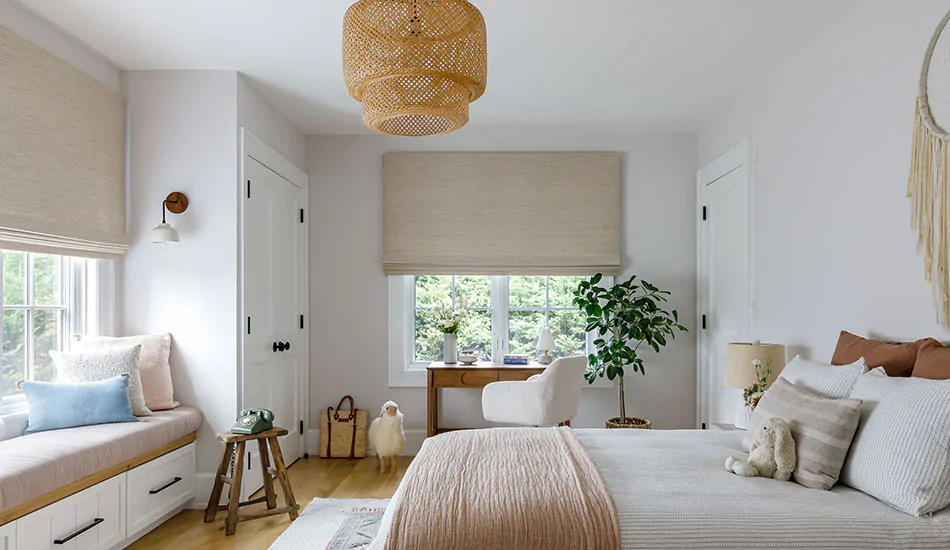
Different styles of window treatments offer varying aesthetics. Drapery is luxurious and has a dramatic impact on your room, especially when hung high and wide on your windows. For a more tailored, elegant look, consider Roman Shades, or go for an organic look with Woven Wood Shades. Prefer a sleek, modern look? Opt for Roller or Solar Shades. Or, go for Blinds which offer a traditional linear aesthetic. And within each category of window treatment, there are different styles and materials so you can create a unique look for your space.
6. Whether Your Windows Are Front-Facing
If you’re covering the front-facing windows of your home, you’ll need to consider not only how your window treatments look on the inside, but also how they look on the outside when they’re pulled closed over the window. For instance, Drapery will give you luxurious folds visible from the outside, and Blinds will look the same from the outside as they do from the inside. However, Roman Shades and Woven Wood Shades have cords that lift and lower the shade on the back of the material, so you’ll be able to see these from the outside.
7. Material Selection to Complement Your Existing Décor
Each type of window treatment offers hundreds of material choices that vary in terms of color, pattern and texture. Finding the right option to complement your existing décor will depend on your intentions for your window treatments, such as whether you’re planning to create a harmonious monotone look or opt for eye-catching contrast. If you’re not sure where to begin in terms of color and pattern, it’s best to start with the existing color temperature of your walls: Do they have cool (green, blue or purple) undertones or warm (red, yellow, orange) undertones? Choosing colors and patterns with similar undertones is a simple way to create a cohesive aesthetic.
8. Embellishments
For more flare in your design, some window treatments offer embellishments such as decorative trim and borders. Trim and borders give your design greater visual interest for more depth and dimension.
Now that you know some of the main factors for how to choose window treatments, learn more about the three main types of window treatments: Shades, Blinds and Drapery. Plus, dive into a window treatment buying guide for each product option to get even more details about each one.
Window Treatment Buying Guide: Explore by Product
Shades, Blinds and Drapery are the three main types of window treatments available, but each has its own styles and customizations so you can create the perfect window treatment for your space. Explore window treatment buying guides by the type of product you think will most suit your needs.
Shades
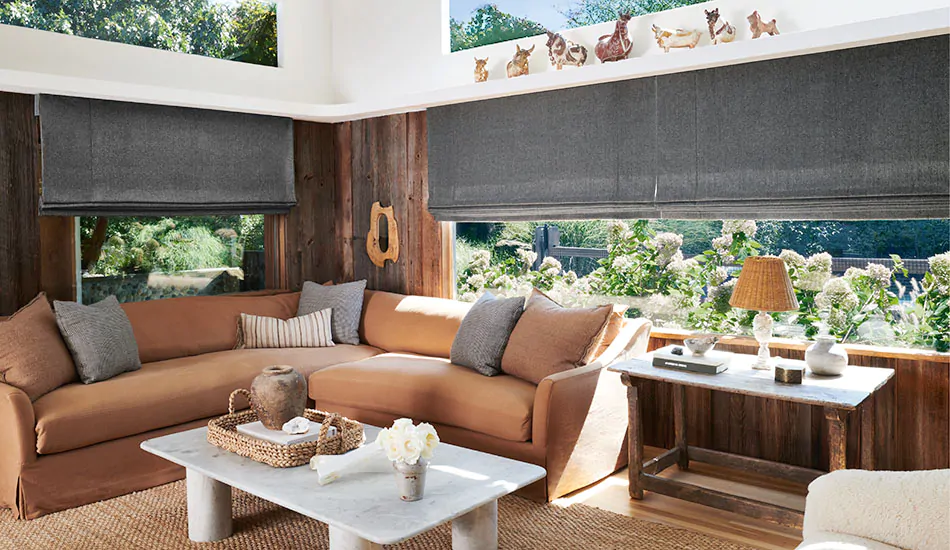
Shades are a type of window treatment that you move up and down to cover or reveal your window. Shades come in a wide variety of styles, each with its own customizations and material options that vary in terms of light and privacy control as well as color, pattern and texture.
Shades Buying Guides
Discover more about the styles of Shades that interest you most.
Blinds
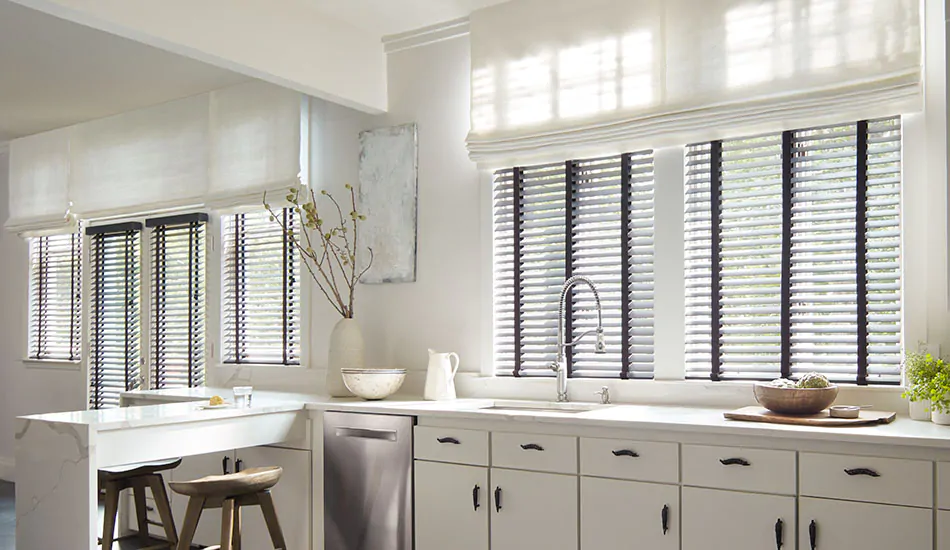
Blinds are window treatments that most commonly feature horizontal, tiltable slats that can also be raised and lowered. They’re typically made from a hard material like wood, faux wood or metal. Another style of Blinds is Vertical Blinds, which feature vertical panels on a track system that move back and forth and are made with hard textiles, similar to the material used for Roller and Solar Shades.
drapery
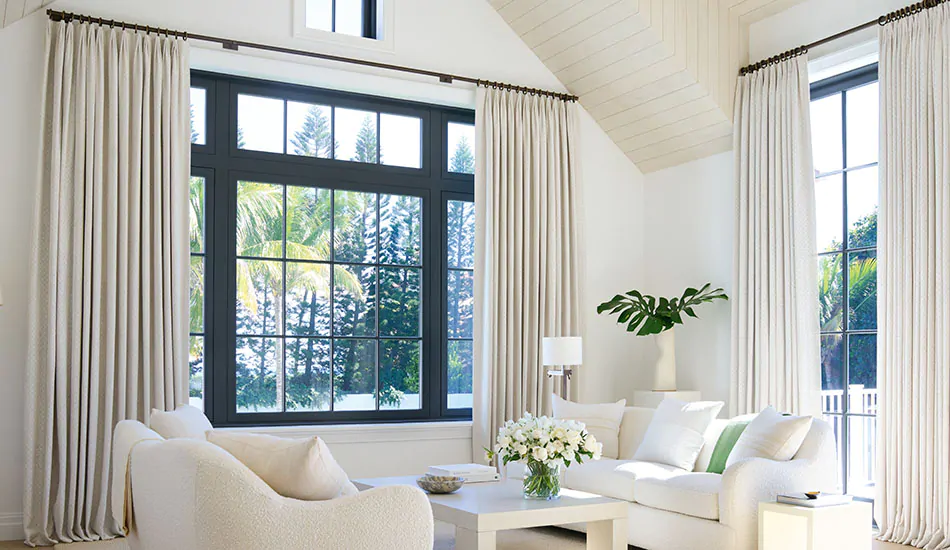
Drapery, or “curtains,” are panels of soft fabric that hang from a rod or a track system above your window. They are typically sold in pairs but can sometimes be sold as a single panel. Drapery is available in several pleat styles, which refers to how the panels are fashioned at the very top, and they vary in terms of aesthetics and functionality.
Window Treatment Buying Guide: Explore by Feature
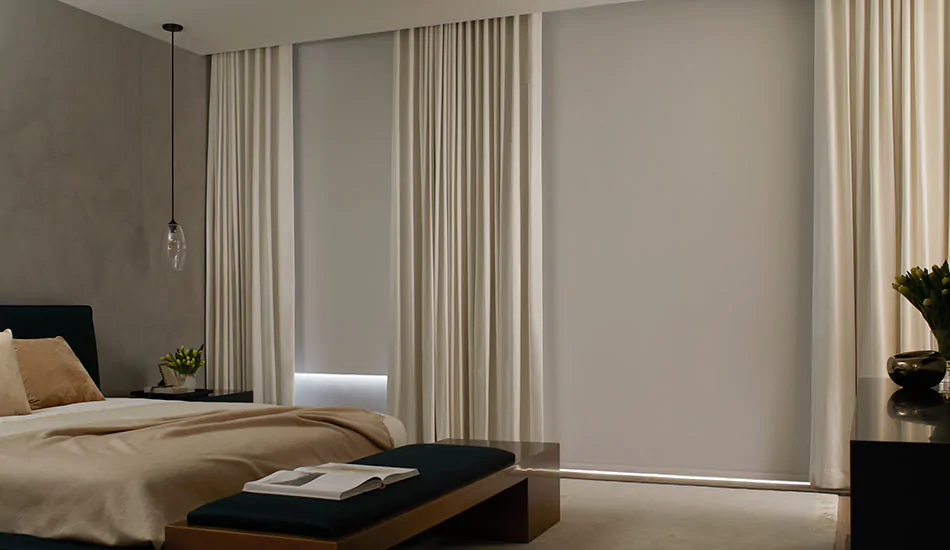
Not sure how to choose window treatments that best suit your style, but have an idea of the kind of features you prefer? Whether you’re looking for Blackout Window Treatments, Energy Efficient options, or are just looking for the Most Popular Window Treatments, explore a window treatment buying guide for each to get a better idea of your options.
Window Treatment Buying Guide: Explore by Room
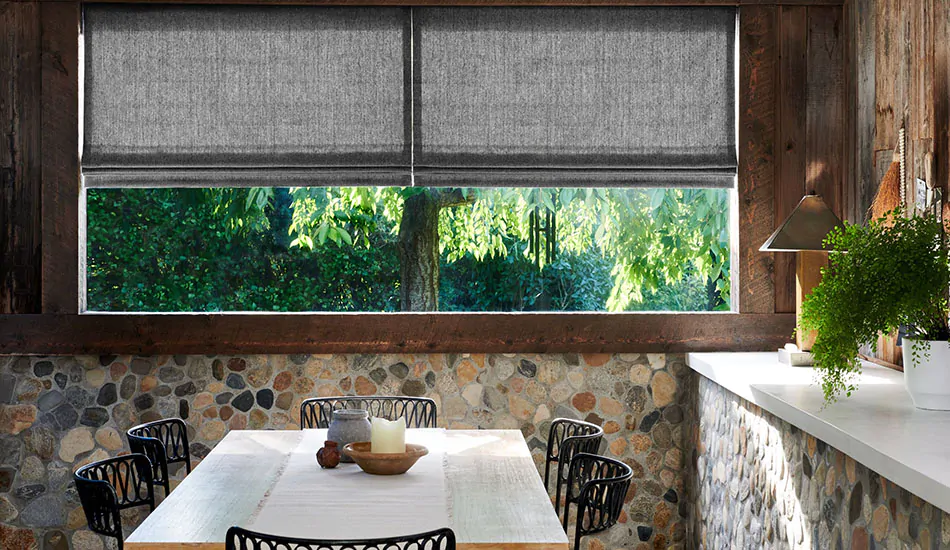
Looking for the best options for a specific room? From formal dining room window treatments to functional bathroom window treatments, elegant living room window treatments and more, learn how to choose window treatments based on the type of room with these buying guides for guidance.
Finalize Your Window Treatment Selection
Now that you’ve learned everything you need to know for how to choose window treatments, it’s time to make your final selections. Shop for window treatments and choose the customizations that create the perfect look and give the right functionality for your space.
